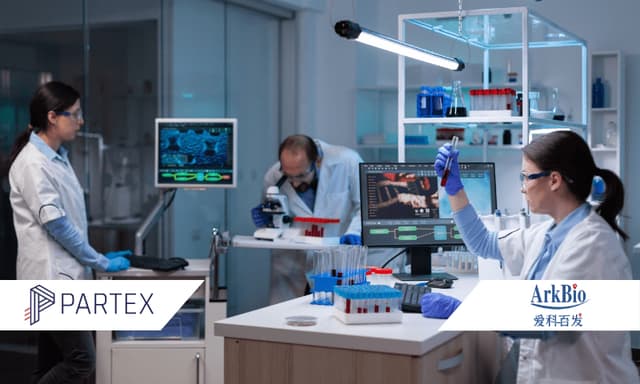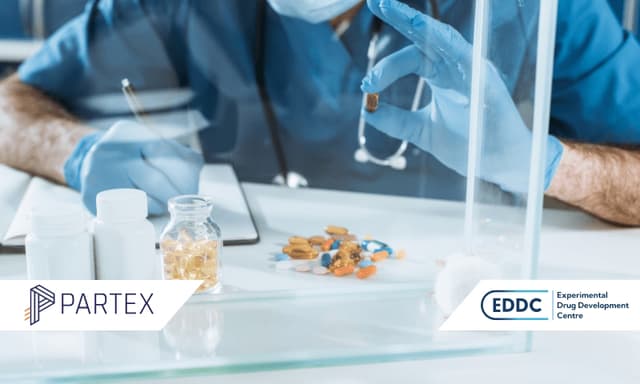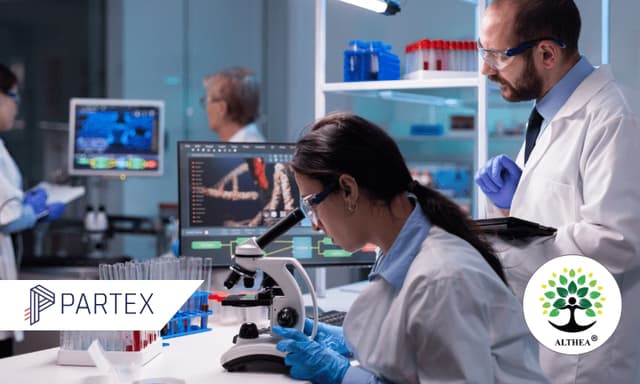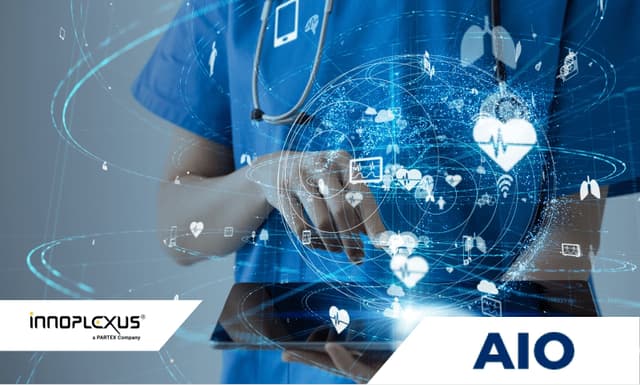What does 2019 have in store for Pharma? We asked industry Thought Leaders to name one disruptive trend or technology that will have a significant impact on the market in the year ahead.
Will pricing pressure lead to a shift in budget management? Is this the year for biosimilar approvals? Will we see continued M&A activity in the sector?
From life cycle management to AI, and Supergenerics to digital healthcare, we’ve listed the Pharma and Biopharma trends you need to know about for 2019.

Former President & Founder
PharmSource
Executives at most global biopharma companies have initiated restructuring programs to reposition their companies as old product franchises decline and new opportunities are presented by clinical science and well-funded emerging biopharma companies. Those efforts include reducing staff, refocusing R&D, closing manufacturing plants and divesting poorly-performing or sub-scale businesses.
The financial capacity created by restructuring is being used to re-stock pipelines with promising new drug candidates. Blockbuster acquisitions have not been part of the mix, but the recently-announced acquisition of Celgene by Bristol Myers-Squibb suggests that such deals are not off the table altogether.
Restructuring can be a mixed bag for CDMOs and CROs. In the near term, it often causes process disruption and staff distractions that slow development programs, and those delays negatively impact the CDMOs and CROs that support those programs. CRO stock prices declined after the Bristol Myers Squibb-Celgene deal was announced out of concern that development programs would lose momentum during the acquisition and integration processes.
At the same time, however, restructuring creates opportunities for service providers: facilities are divested to CMOs with contracts for legacy products; other products are tech transferred as their facilities close; and more services are outsourced to gain efficiencies, e.g., analytical testing and packaging.
Savvy CDMO executives will need to keep one eye out for potential disruptions in the business with key clients, while being on the lookout for new opportunities that are likely to succeed.

Partner
Results Healthcare
Transactions will continue at pace in 2019 and have started with a bang with the announcement of BMS’s announcement of their USD$74bn acquisition of Celgene. This activity will be driven by a number of factors, first the demand for pharmaceuticals and innovative medicines will increase, driven by a growing and ageing population with more wealthy customers, which will see the sector outgrow general global GDP growth. However, within the CDMO and CMO sectors there are additional factors which will drive growth: more drugs coming off patent which will increase the demand for new generic drugs.
M&A will be driven by a need to consolidate a highly fragmented business sector; large pharma continues to outsource more and more of its manufacturing activity and wants to simplify its outsourced manufacturing supply chain by having larger integrated suppliers. Investors, fueled by the continued availability of relatively cheap finance, will see this as an opportunity to be the consolidator in an evolving, long-term successful business sector.

CEO
Innoplexus
Since the pharmaceutical industry is one of the most wasteful, it needs to increase efficiency, particularly when it comes to drug development. We see pharma companies losing margins and lacking the required capital to continue to run trials or testing. At the same time, Artificial Intelligence is maturing - turning the hype into more tangible use cases.
The predictive and analytic powers of AI enable companies to make smarter, faster, and more strategic decisions. AI will increase drug development efficiency by not wasting research efforts, for example creating alternative hypotheses for trials by discovering more data to enable drug repurposing. A data-driven approach can discover trial aspects that are of vital or strategic importance, thereby enhancing the ability to make critical decisions. Additionally, with the influx of data from new devices it will enable real-time, on-the-go, instant results.
AI will be critical to the future of pharma as the amount of available data and monitoring devices increase. In the short term, it will have a real impact with its ability to collect and aggregate disparate data sets and identify patterns which in turn will generate more insights. The real potential of AI and machine learning is in enabling pharma companies to be smarter, faster, and more cost efficient.

Market Access Director
Medicines for Europe
Spending on new originator pharmaceuticals rose due to a wave of new medicines aiming to cure illnesses such as Hepatitis C and offering better treatment options for oncology[1],[2]. Pharmaceutical budgets are not adequately prepared to incorporate these new high-priced innovations where the justification for their pricing is under debate worldwide.
This has led to the application of several short-term cost-containment measures on pharmaceutical expenditure, with several of the measures negatively affecting the sustainability of the off-patent sector. This has led to withdrawals of medicines in several countries[3].
Various European bodies have however highlighted the importance of timely availability of generics and biosimilars to facilitate patients' access to pharmaceutical therapies and to improve the sustainability of national health systems’[4],[5],[6],[7]. The key question for us is how to cope with the costs of innovation while not compromising the sustainability of the off-patent sector.

Senior Consultant
European Thought Leadership, IQVIA
As pricing pressures coupled with volume slowdowns affect markets globally, generics players are finding it difficult to source growth from traditional means of portfolio refreshment and market expansion. Those investigating the Value Added Medicines (VAM) route to source growth continue to encounter challenges in communicating value to stakeholders, particularly payers who control the purse strings.
However, the future of VAMs lies not in the clinical setting but in the real world where proof of superiority comes from real patient usage metrics. Enter healthcare tech where patient-reported outcomes are maturing and becoming increasingly integrated into consumer electronics such as smartphones and wearables.
These, coupled with smart medical devices will allow VAM players to integrate data capture and analyses into their VAM proposition. Companies are beginning to take bold steps in this direction like Sandoz and Pear therapeutics. 2019 will see more pharma companies partner with the tech sector and this trend will trickle through to the off-patent sector as stakeholders become increasingly comfortable in handling readouts from these data sources.

Director of Projects
NIBRT
As biopharma manufacturing becomes increasingly globalised, complex and more highly regulated, the sector must become more streamlined and cost efficient at manufacturing its products. Adoption of disruptive Industry 4.0 technologies offers a potential solution, but biopharma manufacturing is significantly behind other advanced manufacturing sectors in implementing these technologies.
This is due to a number of factors: implementation challenges in highly regulated GMP markets; a lack of knowledge on implementing disruptive technologies in a scalable way and within existing systems; limited visibility on what a ‘best in class’ facility will look like in 2025, and whether clear value exists for operations.
For the biopharma industry to move forward and successfully implement Industry 4.0 technologies, a number of factors need to be addressed:

Managing Director
Ascher Resources
Over the years the approach to life cycle management has traditionally followed the process of launch, growth, maturity, ever-greening and then eventually decline. One noticeable recent trend has been the change in thinking on discounting by originators, to protect market share post patent expiry.
Many companies have historically resisted the temptation to fully compete on price, instead preferring to maintain premium prices and retain a smaller market share. However, with biologics offering the more lucrative opportunities for biosimilars, rather than small molecule products, and the method of procurement being through tenders in many countries, we are now seeing a more aggressive approach to discounting by originators.
In a single source contract position, where the lowest price takes the contract, originators are faced with either competing on price or losing the majority of their business. Recent reports of originators discounting prices by 80% to retain contracts could be a sign of the future as ‘legacy products’ become vital to sustain production capacities and market presence. This may even stimulate a rethink on originator pricing, as we witness a new and younger breed of management who may have more of a social conscience than their predecessors.

BioPlan Associates
Despite being a late bloomer, China has proved itself as a growth engine for the biopharma industry in recent years, posting double digit growth, according to our just-released, peer-reviewed study, Advances in Biopharmaceutical Technology in China. The sales of biopharmaceuticals in China’s market grew from USD $9.4 billion to USD $22.8 billion from 2012 to 2016, or nearly 25% annually. The market is estimated to continue to grow at this rate, so that by 2021 sales volume is expected to reach USD $48.8 billion. We expect especially strong growth in the sector of therapeutic mAb, benefiting both domestic makers of bio-similar/bio-better version of mAb as well as international pharma players with more innovative antibody pipelines.
China is also making substantial investments in bio-processing. Bio-production capabilities have grown quickly in the past decade, reaching total capacity over 85,000L through application of new technologies. Many domestic companies have ambitions to export biologics, with the more optimistic analysts projecting that ‘made-in-China’ biologics will become as common as in made-in-China electronics in the not distant future, via either contract bio-manufacturing or export of their own bio-similars. The consensus is that China will play a more significant role in both consumption and production of biopharmaceuticals in the next decade.

Senior Vice President, Global Sales & Marketing
Catalent Pharma Solutions
Recent years have seen innovator companies reaching out to service providing CDMOs to be more than just a “contract company” and as a result, CDMOs in general have evolved and matured into collaborative partners, offering their customers a broad range of experience, technologies and tools with a focus on quality, reliability and operational excellence.
There is growing drive among innovators to value-based drug purchasing that focuses towards real-world outcomes, where the intentional design of drug products (formulation, dose form, device, packaging, “smart”-enabled features) for optimal patient usability will become critical to maximize a product’s ROI. This requires R&D CMC teams to look deeper into the understanding of patients’ views on shortcomings of existing treatments, known drivers of poor adherence and treatment discontinuation, and potential “smart component” enhancements to the drug product. Later, clinical trials will need to be designed to demonstrate that the optimized designs improve patient outcomes and provide benefits over the current standard of care, to provide evidence for future payers and providers.
Innovators cannot effectively undertake these tasks alone, and strategic partnerships with collaborators such as Catalent will become increasingly vital. The wealth of experience partners have in formulating, delivering and launching new drug products brings an impartial view to development programs, so that from the outset of a project, targets around the design of a new drug product can be set that focus on the key goal, which is delivering the best possible treatments effectively, safely and conveniently to patients.

Director, Strategy & Thought Leadership - Life Sciences
Clarivate Analytics
Every segment of the pharmaceutical industry will continue to see consolidation throughout 2019. We started the new year with two high profile acquisitions of oncology-focused companies by Big Pharma (BMS/Celgene, Eli Lilly/Loxo). Other innovators will follow with transformational or bolt-on deals to secure competitive positions in specialty and rare disease indications. Additional consolidation is also likely in the generics industry, to further stabilize price erosion and add new, high-barrier-to-entry products to portfolios.
Shifting regulatory demands, particularly in markets like China, may also help to drive consolidation. On the contract development and manufacturing side, M&A will continue to be important to compete at scale, offer full lines of complementary or integrated services, and secure the newest technologies, particularly as drug pipelines increasingly fill with cell-based therapies or other highly-complex formulations.
The underlying theme here is the various disruptions rippling through every corner of the industry, and how deal-makers will manage, if not take advantage of, these disruptions in 2019.

Associate Editor
PharmSource, a GlobalData product
We expect to see a greater number of FDA biosimilar approvals in 2019 versus 2018 as more innovator biologics reach their market exclusivity expiration. Although the US currently lags far behind the EU with only one-third of the number of biosimilar approvals, this is set to change. The latest biosimilar report from PharmSource, a GlobalData product, shows we are entering the third wave of opportunity for biosimilar makers, with 66 innovator biologics due to come off-patent in the US between 2020 and 2025. Consequently, we expect to see an increasing number of biosimilar review applications to the FDA in 2019.
Our research shows that rituximamb and filgrastim are the most common biosimilars currently in pre-registration stage. Adalimumab and bevacizumab are currently the most popular biosimilars across all stages of clinical development; both have clinical candidates in double figures.
In the coming third wave, approximately half of biosimilars will be monoclonal antibodies, according to research by PharmSource and the GlobalData Pharma Intelligence Center. The present volumes of clinical development candidates indicate there will be more future biosimilar approvals from companies based in Europe and Asia, especially China and India, than from the US.

CEO
Crystec Pharma
With increasing numbers of FDA approvals falling under the 505(b)(2) pathway, the rise of Supergeneric drugs is undeniable. Supergenerics offer significantly shorter development and regulatory pathways to market, and with the use of novel technologies to improve bioavailability, or to achieve more convenient or effective routes of delivery, it is even possible to out-perform New Chemical Entities.
Generic products are being repurposed to treat new conditions. There is also an increasing drive towards combination products, incorporating multiple generic APIs, to enable improved and more synergistic treatment regimens.
Many generic products have been on the market and remained unchanged for decades, and often there is no compelling reason for incremental improvements to be made. For many conditions however, the effectiveness of available treatments is lacking, and any improvement to the performance, tolerability and ease of administration would be welcomed by patients and clinicians. In some cases, dramatic improvements can be made to product tolerability and performance through reformulation.
2019 will see Crystec continuing our focus on development of Supergeneric products, reformulating and repurposing existing molecules, combining multiple drugs into engineered, crystalline particles, applying our mSAS (modified Supercritical Anti-Solvent) technology to develop strongly differentiated treatments for patients.
The original article was published on: CPhI worldwide.

Frankfurt, Germany & Miami, FL, USA – March 17, 2025 – Partex NV and Fortress Biotech, Inc. (Nasdaq: FBIO) (“Fortress”), an innovative biopharmaceutical compan...

Frankfurt, Germany, 20th February, 2025 – Partex is pleased to announce a strategic collaboration with Princeton Drug Discovery Ltd (PDD), a leading biotech c...

Pune, [13-02-2025]: Pimpri Chinchwad University (PCU) reaffirmed its commitment to technological excellence and academic innovation by organizing a two -day Fac...

Pressemitteilung vom 08.01.2025 Die Amrit AG, ein Unternehmen der Partex Gruppe - einem führenden Anbieter von KI-Lösungen im Gesundheitswesen - gibt heute de...

Partnership aims to expand therapeutic potential of proprietary autotaxin inhibitor through AI-driven approach Frankfurt, Germany – Date – Partex, a leader in ...

Frankfurt, Germany, 3 rd June 2024, 9am CET Partex, a leading provider of AI-driven solutions in the pharmaceutical industry, is thrilled to announce i...

Frankfurt, Germany, 23 April 2024 – Partex, a leading provider of AI-driven solutions in the pharmaceutical industry, is thrilled to announce its partnership wi...

Frankfurt, Germany; 28 March 2024 – Partex Group, a pioneer in AI-driven drug discovery, announces a collaboration with Althea DRF Lifesciences, an established ...

During the German Cancer Congress 2024 in Berlin, the companies Innoplexus AG /Amrit AG, companies of Partex N.V., presented the results of a pilot project carr...

Frankfurt, Germany; 14 March 2024 Partex Group, a pioneer in AI-driven drug discovery, today announces a collaboration with global pharmaceutical giant Sanofi, ...


Innoplexus wins Horizon Interactive Gold Award for Curia App
Read More